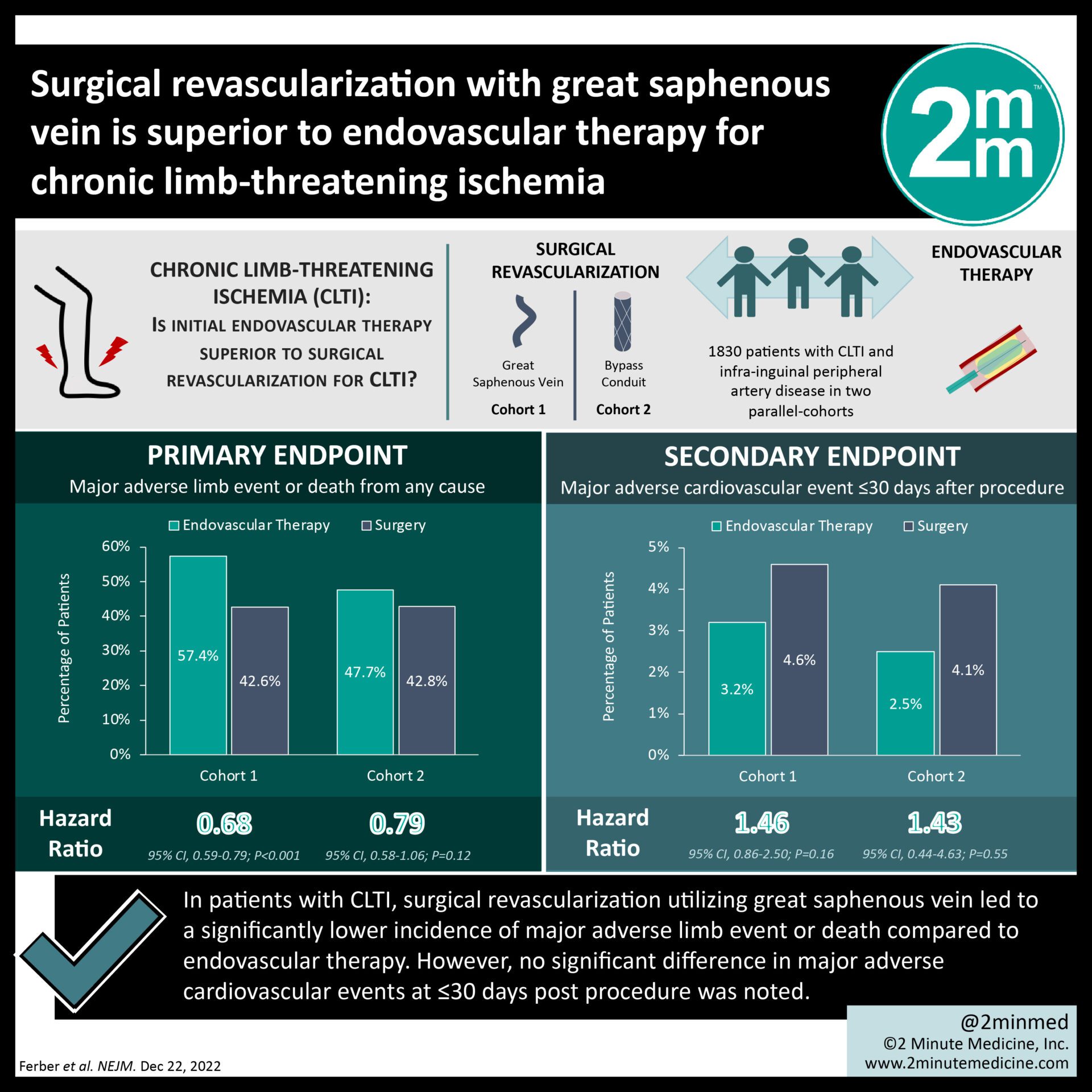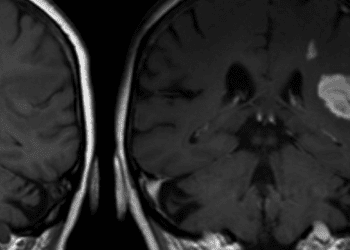#VisualAbstract: Surgical revascularization with great saphenous vein is superior to endovascular therapy for chronic limb-threatening ischemia
 1. In patients with chronic limb-threatening ischemia, major adverse limb events and mortality were significantly lower with surgical revascularization than with endovascular treatment.
1. In patients with chronic limb-threatening ischemia, major adverse limb events and mortality were significantly lower with surgical revascularization than with endovascular treatment.
2. No significant differences were seen between groups in patients without an adequate saphenous vein conduit.
Evidence Rating Level: 1 (Excellent)
Study Rundown: Chronic limb-threatening ischemia is the most severe form of peripheral artery disease, characterized by ischemic foot pain at rest, ischemic ulcerations, or gangrene. Timely revascularization with surgical bypass or endovascular therapy is necessary to prevent limb amputation. There is a paucity of data comparing these revascularization approaches. This randomized clinical trial compared surgical bypass and endovascular therapy in patients with chronic limb-threatening ischemia. Patients were further classified as those with a single segment of the great saphenous vein (cohort one) or those who required an alternative bypass conduit (cohort two). For cohort one, major adverse limb events or death from any cause occurred significantly more in the endovascular group compared to the surgical group. There were no significant differences in the incidence of major adverse cardiovascular events. For cohort two, the incidence of major adverse limb events, mortality, or cardiovascular events was not significantly different between groups. As a limitation, there was procedural heterogeneity within each trial group, including femoral-popliteal, femoral-tibial, or popliteal-tibial bypass for surgical treatment and superficial femoral artery, popliteal artery, and tibial artery for endovascular treatment. Further, the trial may not be statistically powered to detect a relative difference of 25% in the primary outcome, as the planned number of patients enrolled in the trial was not met.
Click to read the study in NEJM
In-Depth [randomized controlled trial]: This randomized clinical trial compared surgical bypass and endovascular therapy in patients with chronic limb-threatening ischemia. Patients were classified as those with a single segment of the great saphenous vein (cohort one; n=1,434) or those who required an alternative bypass conduit (cohort two; n=396) and then randomized in a one-to-one ratio into surgical and endovascular treatments. Cohorts one and two were followed for a median of 2.7 and 1.6 years, respectively. The primary outcome was a composite of major adverse limb events (above-ankle amputation or major reintervention) or death from any cause. The secondary outcomes were the occurrence of a major adverse limb event overall, death within 30 days post-operation, minor reinterventions, or a major adverse cardiovascular event. For cohort one, the primary outcome occurred in 42.6% and 57.4% of the surgical and endovascular groups, respectively (Hazard Ratio [HR], 0.68; 95% Confidence Interval [CI], 0.59 to 0.79; p<0.001). For the individual primary outcomes in cohort one, the incidence of major reinterventions (HR, 0.35; 95% CI, 0.27 to 0.47) and above-ankle amputations (HR, 0.73; 95% CI, 0.54 to 0.98) were significantly higher in the endovascular group. The incidence of death was not significantly different between groups. Recurrence of chronic limb-threatening ischemia was lower in the surgical group compared to the endovascular group in cohort one (incidence rate ratio, 0.82; 95% CI, 0.70 to 0.95). There were no significant differences in secondary outcomes. For cohort two, primary and secondary outcomes were not significantly different between groups. This study suggests that initial bypass surgery may result in better clinical outcomes for chronic limb-threatening ischemia patients with an adequate single segment of great saphenous vein for the conduit.
©2022 2 Minute Medicine, Inc. All rights reserved. No works may be reproduced without expressed written consent from 2 Minute Medicine, Inc. Inquire about licensing here. No article should be construed as medical advice and is not intended as such by the authors or by 2 Minute Medicine, Inc.








